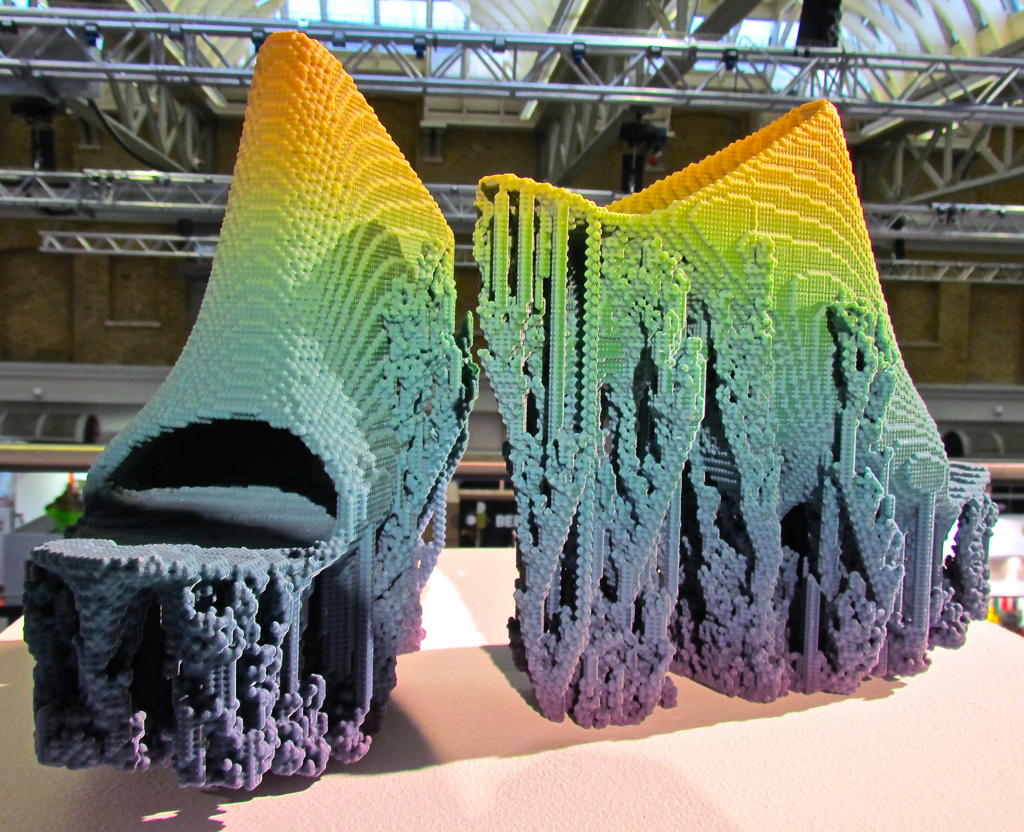World-famous 3D designer Francis Bitoni declared in an interview with Dezeen that he believes the current state of 3D printing is stagnant. Is this true?
Bitoni has worked on many amazing printed 3D designs, particularly in the fashion area, including the amazing shoes shown at top. Bitoni might be considered one of the leading 3D print fashion designers.
We don’t think it’s as bad as he proposes, but let’s look at what was said in Dezeen:
It’s just become incredibly stagnant, and I think there’s a number of reasons for that.
We had an explosion of FDM [fused deposition modelling] machines after those patents ran out, but it’s an industry that’s just completely choked by intellectual property law right now. Now the patents for DLP [digital laser projection] and SLA [stereolithography] are expiring, we’re starting to see more and more of those machines enter the market.
But the real problem is, the machine manufacturers are making so many assumptions about how we use the machine that it’s not really being treated as a tool for making things. It’s so restricted in its nature.
Bitoni also feels that the price of materials is simply too high to produce improved results in greater quantities. As a result, the expectations of a few years ago are not being met, at least for artists designing items for 3D printing.
We agree. While low-cost machines have become somewhat popular, they have been limited to technologies made available by patent expiry, while the “better” technologies are still protected by patents for some years yet. Patented technologies are frequently leveraged by their owners to create high-priced products and materials. That’s how patents work: they give the inventor a temporary monopoly in exchange for them creating something amazing.
But, as Bitoni points out, it also holds back progress in some areas. For artists, this is certainly true.
But it may not be for other users of 3D printing technology. Consider manufacturers requiring prototypes, who previously had to spend sums far larger than the cost of 3D printed prototypes. To them, 3D printing is actually a good deal.
It works for manufacturers, but not yet for artists, who may have to wait longer for additional patents to expire.
Via Dezeen


